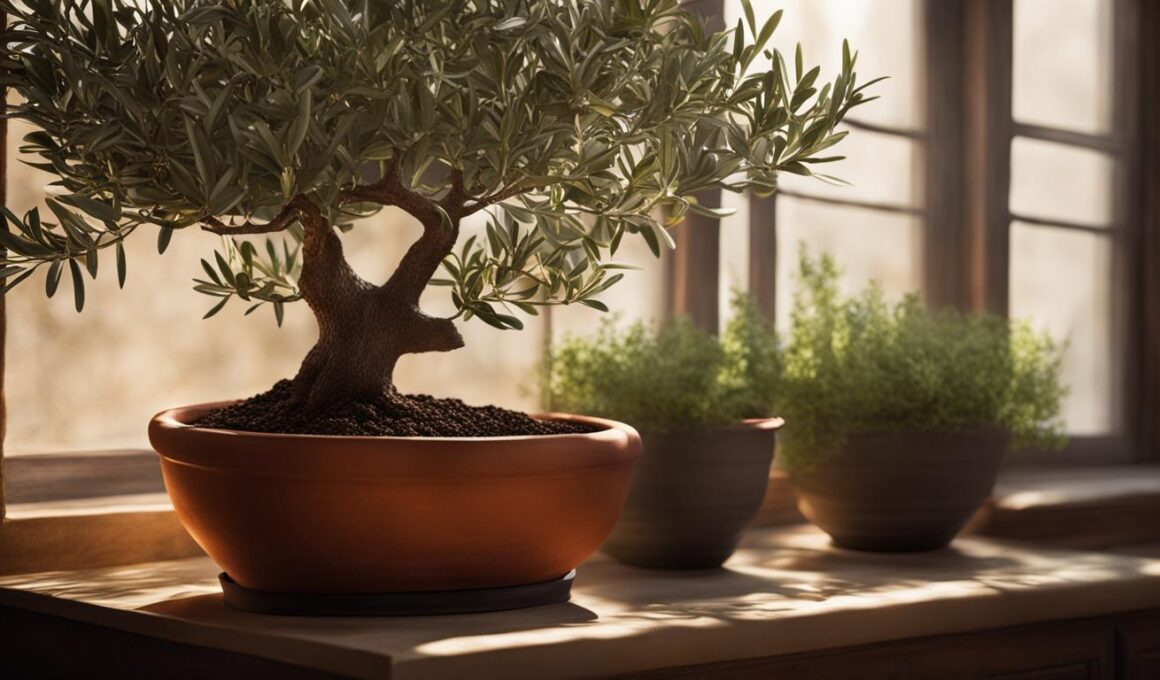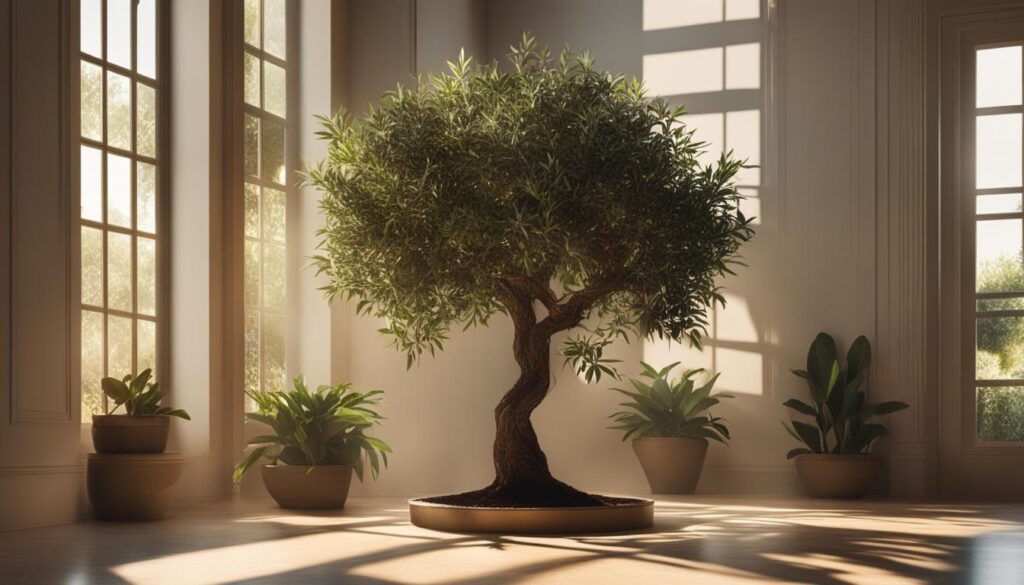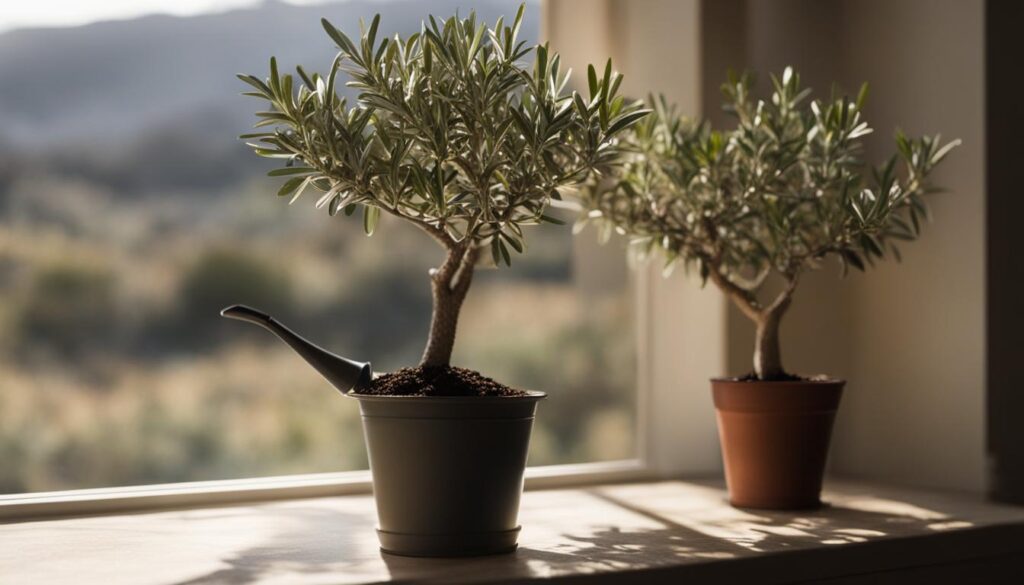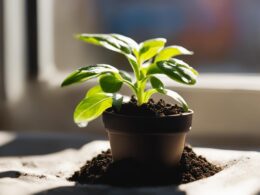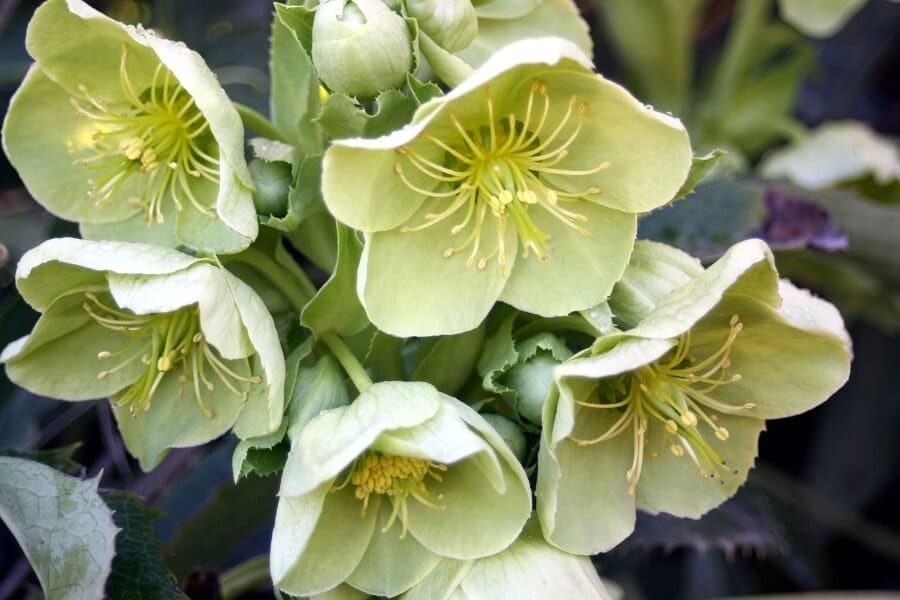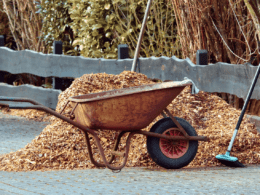Growing an olive tree indoors can be a beautiful addition to your home, but it requires proper care and attention. While olive trees thrive in full sunlight, they can be grown indoors with the right conditions. In this complete guide, we will explore the steps to successfully grow and care for an indoor olive tree, from finding the right tree to providing the necessary light and water. Whether you are an experienced indoor gardener or a beginner, this guide will provide you with all the information you need to grow an olive tree indoors.
Post Summary
- Indoor olive trees require proper care and attention to thrive.
- Choose a reputable source to buy a healthy and well-cared-for tree.
- Provide at least six hours of direct sunlight or supplement with a grow light.
- Water when the top inch of soil is dry and fertilize twice a year with a slow-release fertilizer.
- Not all indoor olive trees will bear fruit, and their lifespan indoors is limited.
Where to Buy an Olive Tree for Indoor Growing
If you are interested in growing an indoor olive tree, it’s important to know where to buy one. You can find olive trees at local garden centers or order them online. It’s recommended to choose a reputable source that offers healthy and well-cared-for trees. Vagabond in Western Springs, IL is known for its quality olive trees and can provide guidance on how to care for them. Additionally, there are artificial olive tree options available for those who prefer low-maintenance plants.
Where to Buy an Olive Tree for Indoor Growing
| Supplier | Location | Benefits |
|---|---|---|
| Vagabond | Western Springs, IL | Quality trees, expert guidance |
| Online nurseries | Various | Convenient, wide selection |
| Local garden centers | Various | Support local businesses, hands-on selection |
| Artificial plant retailers | Various | Low maintenance, no need for natural light |
When buying an olive tree, consider the size and variety that best suits your space and preferences. Make sure to inspect the tree for any signs of disease or damage before making a purchase. It’s also a good idea to inquire about the care instructions and any specific requirements for the tree you choose. By purchasing from a trusted source, you can ensure that you are starting with a healthy tree that has the best chance of thriving in your indoor environment.
Remember, an indoor olive tree can be a beautiful and long-lasting addition to your home. With the right care and attention, you can enjoy the beauty of this Mediterranean plant right in your own living space. Whether you choose a live tree or an artificial option, be sure to provide the necessary light, water, and care to help your olive tree thrive and bring a touch of nature indoors.
Light Requirements for Indoor Olive Trees
Light is a crucial factor in the successful growth of indoor olive trees. These trees need at least six hours of direct sunlight each day to thrive. It is recommended to place your indoor olive tree near a sunny, south-facing window where it can receive the maximum amount of sunlight. This will provide the tree with the necessary light intensity for optimal growth.
If your home does not have sufficient natural light, you can supplement it with a grow light. A full-spectrum LED grow light is a great choice as it can provide the specific light wavelengths that olive trees need for photosynthesis. Position the grow light above the tree, keeping it approximately 6-12 inches away to ensure sufficient light distribution.
Keep in mind that the light requirements may vary depending on the specific variety of olive tree you have. Some varieties can tolerate lower light conditions, while others require more direct sunlight. It is important to research the specific light preferences of your olive tree variety to ensure its proper growth.
Care and Maintenance of Indoor Olive Trees
Proper care and maintenance are crucial for the health and longevity of your indoor olive tree. By following these essential care guidelines, you can ensure that your olive tree thrives in its indoor environment.
Watering
When it comes to watering your indoor olive tree, it’s important to find the right balance. Olive trees prefer well-draining soil, so make sure to choose a potting mix that allows water to flow freely. Water the tree when the top inch of soil feels dry to the touch, but be cautious not to overwater. Overwatering can lead to root rot and other water-related issues. Monitor the moisture level in the soil and adjust your watering frequency accordingly.
Fertilizing
Fertilizing your indoor olive tree is necessary to provide it with the essential nutrients it needs for healthy growth. Apply a small amount of slow-release fertilizer twice a year, following the manufacturer’s instructions. Avoid over-fertilizing, as this can cause salt build-up in the soil. Additionally, consider using organic fertilizers to minimize the risk of chemical buildup.
Pruning
Regular pruning is essential to maintain the size and shape of your indoor olive tree. Prune any dead or diseased branches to promote new growth and prevent the spread of diseases. Additionally, you can prune to control the tree’s height and shape. Pruning during the dormant season (late winter or early spring) is generally recommended. Use clean, sharp pruning shears to make clean cuts and minimize damage to the tree.
Pest Control
Keep a close eye on your indoor olive tree for any signs of pests such as aphids, spider mites, or scale insects. These pests can cause damage to the leaves and hinder the tree’s overall health. If you notice any pests, promptly treat them with organic pest control methods such as insecticidal soap or neem oil. Regularly inspect your tree to catch any pest infestations early and prevent them from spreading.
Table: Indoor Olive Tree Care Checklist
| Aspect of Care | Description |
|---|---|
| Watering | Water when the top inch of soil is dry, avoiding overwatering. |
| Fertilizing | Apply slow-release fertilizer twice a year, following instructions. |
| Pruning | Regularly prune to maintain size, shape, and remove dead branches. |
| Pest Control | Monitor for pests and treat promptly with organic solutions. |
By following this care checklist and providing the necessary attention, you can ensure that your indoor olive tree remains healthy and vibrant. Remember to regularly assess its needs and adjust your care accordingly. With proper care, your indoor olive tree will thrive and bring beauty to your home for years to come.
The Joys of Growing Fruit on Indoor Olive Trees
Indoor olive trees can bring a touch of Mediterranean delight to your home, and one of the most exciting aspects of growing these trees is the potential for fruit production. While not all indoor olive trees will bear fruit, choosing a fruit-bearing variety like Arbequina or Picholine increases your chances of enjoying a bountiful crop. To create the optimal conditions for fruiting, you’ll need to provide your olive tree with some specific care.
Light and Temperature
Indoor olive trees need plenty of sunlight to produce fruit, so be sure to place your tree near a sunny, south-facing window. Aim for at least six hours of direct sunlight each day. During the summer months, consider moving your olive tree outdoors to expose it to temperature fluctuations, as this can stimulate fruit production.
Pollination
Fruit formation in olive trees requires pollination. While outdoor olive trees rely on wind and insects for pollination, indoor trees may need a little help. Gently shaking the branches of your tree or using a soft brush to transfer pollen between flowers can aid in the pollination process. Alternatively, you can introduce a small fan or a handheld pollinator to create airflow and encourage pollination.
Patience and Care
It’s important to note that growing fruit on indoor olive trees requires patience. Olive trees typically take several years to mature before they are capable of producing fruit. During this time, you will need to provide consistent care and monitoring. Make sure to water your tree regularly, allowing the soil to dry slightly between waterings. Fertilize it with a balanced, slow-release fertilizer designed for fruiting plants to provide essential nutrients.
Repotting and Container Selection for Indoor Olive Trees
As your indoor olive tree grows, it may outgrow its current pot and require repotting to ensure its continued health and growth. Repotting involves transferring the tree to a larger container, providing enough space for the roots to expand and establish themselves. It is important to choose the right pot and potting mix to create optimal conditions for your indoor olive tree.
Container Selection
When selecting a container for repotting your indoor olive tree, consider the following factors:
- Size: Choose a pot that is at least 25% larger than the root ball of your olive tree. This will allow ample space for the roots to grow and prevent them from becoming root-bound.
- Drainage: Ensure that the pot has proper drainage holes to prevent waterlogging, which can lead to root rot. Elevating the container on plant feet or blocks can also improve drainage.
- Material: Opt for a pot made from a breathable material such as terracotta or ceramic, as this allows for better airflow to the roots.
Note: Avoid using pots that are too large, as excessive soil can retain too much moisture and lead to overwatering.
Potting Mix
A well-draining potting mix is essential for the health of your indoor olive tree. Consider using a mix of perlite, bark chips, or small gravel to create an ideal growing environment. This will allow excess water to drain away from the roots and prevent waterlogged soil. Avoid using heavy soil or compost that retains moisture, as it can lead to root rot.
To repot your olive tree, gently remove it from its current pot, loosen the roots if they are compacted, and place it in the new container. Fill in the gaps with the potting mix, ensuring that the tree is secure and upright. Water the tree thoroughly after repotting to help settle the soil.
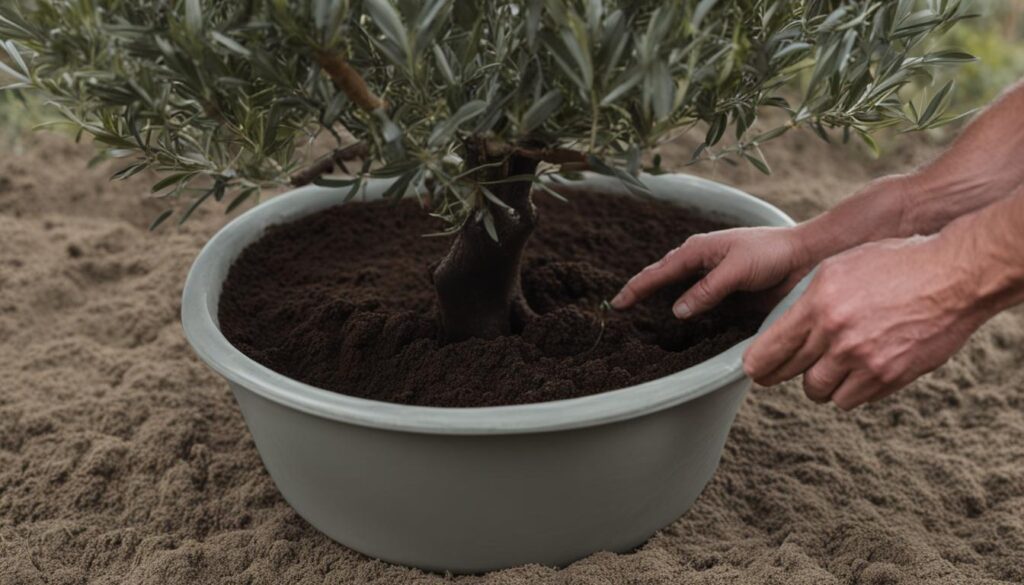
Conclusion
Growing an olive tree indoors can be a rewarding experience that adds beauty and a touch of the Mediterranean to your home. By providing the right conditions and care, you can successfully nurture and enjoy the presence of an indoor olive tree.
Remember that olive trees require at least six hours of direct sunlight each day to thrive. Place your tree near a south-facing window to maximize sunlight exposure or consider using a full-spectrum LED grow light during darker winter months.
Proper care and maintenance are essential for the health of your indoor olive tree. Use a well-draining potting mix and water the tree when the top inch of soil is dry. Fertilize the tree twice a year with a slow-release fertilizer and monitor for pests to prevent damage.
While indoor olive trees have a limited lifespan of about 8-9 years, they can bring great joy and aesthetics to any space. Consider the guidelines and tips provided in this guide to create a thriving indoor olive tree and transform your indoor garden into a Mediterranean oasis.
FAQ
Can olive trees be grown indoors?
Yes, olive trees can be grown indoors with the right conditions and care.
Where can I buy an olive tree for indoor growing?
You can find olive trees at local garden centers or order them online. Vagabond in Western Springs, IL is a reputable source known for its quality olive trees.
What are the light requirements for indoor olive trees?
Olive trees need at least six hours of direct sunlight each day. If your home doesn’t provide enough natural light, you can supplement it with a grow light.
How do I care for an indoor olive tree?
Olive trees prefer well-draining soil, so choose a potting mix that allows for good drainage. Water the tree when the top inch of soil is dry and fertilize it twice a year with a small amount of slow-release fertilizer. Prune as necessary and treat pests promptly.
Can indoor olive trees bear fruit?
Yes, some indoor olive tree varieties can bear fruit, such as the Arbequina and Picholine. However, specific conditions and outdoor exposure during the summer months are required for successful fruiting.
How long do indoor olive trees typically live?
Indoor olive trees have a shorter lifespan and can live indoors for about 8-9 years before their health declines.
When and how should I repot an indoor olive tree?
As your olive tree grows, you may need to repot it to provide enough space for the roots. Choose a container that is at least 25% larger than the root ball, ensure proper drainage, and use a well-draining potting mix or a mix of perlite, bark chips, or small gravel.
Can I grow an indoor olive tree?
Yes, by providing the right amount of sunlight, water, and care, you can successfully grow an indoor olive tree and enjoy its beauty.
Can the same steps be applied to grow an olive tree indoors as well?
Yes, the same steps for growing black olive tree at home can be applied to grow an olive tree indoors. Ensure good drainage, adequate sunlight, and appropriate soil pH. Prune regularly and water sparingly. With proper care, you can enjoy homegrown olives indoors.





